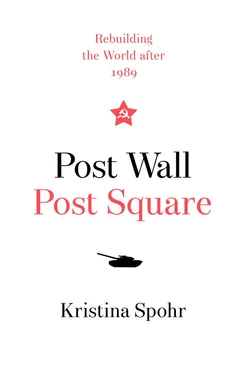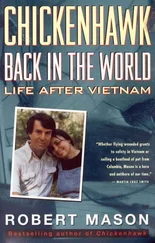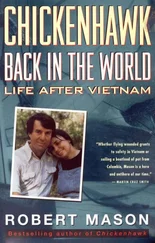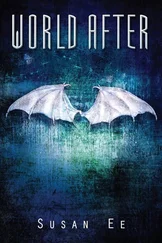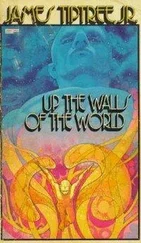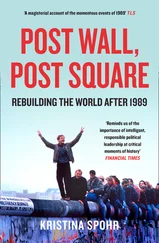Bush’s initial diplomatic priority had been to pursue an opening with China, but this was much more difficult post-Tiananmen. It was only after his European tour – the NATO summit in May and his trips to Poland and Hungary in July – that the president really began to grasp the magnitude of change in Europe. With the language of revolution ringing in his ears as he witnessed the bicentennial celebrations of 1789 during the G7 summit in Paris, he decided it was finally time to propose a meeting with Gorbachev to develop a personal relationship in order to manage the growing turmoil. This was a veritable ‘change of heart’ – indeed, as Bush would later admit in Malta, a turn of ‘180 degrees’. [4]
The Soviet leader, of course, had always been keen to meet, but it was not possible to agree firmly on date and place until 1 November. And by the time they actually met one month later, the Iron Curtain was a thing of the past: East Germany was dissolving, a palace coup had taken place in Bulgaria, and Czechoslovakia’s Velvet Revolution was in full swing. Bush worried that political leaders might not be able to control this remarkable revolutionary upsurge. In particular, he feared that Gorbachev could still be pushed into using force to hang on to the bloc and shore up Soviet power. That is why the president resisted the temptation to celebrate the triumph of democracy – to the puzzlement of many Americans, especially in politics and the press. Bush felt it was in the American national interest, first, to help Gorbachev stay in power, given his continued commitment to reform and, second, to keep US troops in Europe to maintain American influence over the continent. With the geopolitical map in flux, a meeting of minds between the superpowers had become vital for the peaceful management of events. That is why he and Gorbachev needed to talk, even if they had no agreements to sign.
Ten days before their encounter, on 22 November, Bush cabled the Soviet leader: ‘I want this meeting to be useful in advancing our mutual understanding and in laying the groundwork for a good relationship.’ More, ‘I want the meeting to be seen as a success.’ He insisted: ‘Success does not mean deals signed, in my view. It means that you and I are frank enough with each other so that our two great countries will not have tensions that arise because we don’t know each other’s innermost thinking.’ [5]
The two sides had already agreed that it would be a ‘no agenda’ meeting, but the president wanted Gorbachev to have a general idea of what he had in mind. He listed six key topics: Eastern Europe; regional differences (from Central America to Asia); defence spending; visions of the world for the next century; human rights; and arms control. ‘Of course,’ Bush added, ‘you will have your own priorities.’ [6]
The president clearly sought the freedom to improvise in Malta. This horrified Scowcroft and the NSC staff who had never wanted a summit with no agenda. They feared another Reykjavik, when – so they believed – Reagan had got seduced by Gorbachev. In their eyes it was imperative to save Bush from falling for the Kremlin’s smooth talker who with sweet words like ‘peace’, ‘disarmament’, and ‘cooperation’ had gained a huge cult following in the West. Most of the president’s entourage believed that if Bush could be persuaded to work from a firm agenda based on ‘a package of initiatives on every subject’, that would put Gorbachev on the defensive. And it would help them to keep the president on a tight leash and minimise the dangers – at such a pivotal moment in history – of ill-advised American concessions. [7]
Bush and Gorbachev flew to Valletta with their foreign ministers and a few key advisers. Their weekend of talks, held on Saturday and Sunday 2–3 December 1989, were originally intended to move to and fro between an American and a Soviet battle-cruiser. But a massive storm blew up and so the venue was moved to the huge Soviet passenger liner Maxim Gorky , safely moored in Valletta’s great harbour. Even so, the Saturday afternoon and evening sessions had to be cancelled. Bush jotted down in his diary: ‘It’s the damnedest weather you’ve ever seen … the highest seas that they’ve ever had, and it screwed everything up … The ship is rolling like mad … Here we are, the two superpower leaders, several hundred yards apart, and we can’t talk because of the weather.’ Scowcroft recalled: ‘Gorbachev could not reach the Belknap [i.e. the US cruiser] for dinner that evening, so we ate a marvellous meal meant for him – swordfish, lobster, and so forth.’ [8]
But in spite of the stormy weather, president and general secretary managed to spend most of the two days in calm and fruitful discussion. They clicked right from the start. Bush even approved of Gorbachev’s taste in clothes, noting in his diary: ‘He wore a dark blue pinstripe suit, a cream-coloured white shirt (like the ones I like), a red tie (almost like the one out of the London firm with a sword).’ And, the president added, he had a ‘nice smile’. [9]
In the first plenary the Soviet leader proposed that they should develop ‘a dialogue commensurate with the pace of change’ and predicted that, although Malta was officially just the prelude to a full-scale summit the following summer, it would have ‘an importance of its own’. Bush agreed, but he then tried to cut through the standard Gorby grandiloquence. Getting down to brass tacks, he spelled out the specific ‘positive initiatives’ by which he hoped to ‘move forward’ into the 1990 summit. [10]
The president assured Gorbachev that he believed the world would be ‘a better place if perestroika succeeds’. To this end, he said he would like to waive the Jackson–Vanik amendment, which since 1974–5 had prohibited open economic relations with the Soviet bloc. Trade negotiations combined with export credits would, he declared, enable the USSR to import the modern technology that it needed. ‘I am not making these suggestions as a bailing out’, Bush insisted, but in a genuine spirit of ‘cooperation’. [11]
In similar vein, the president was now ready to act openly as an advocate for Soviet ‘observer status’ in the GATT, ‘so that we can learn together’. He promised to support Moscow’s aspiration, after completion of the latest round of multilateral trade renegotiations – the so-called Uruguay Round – between the 123 contracting members. Joking that the prospect of early Soviet association might even serve as an ‘incentive’ to EC countries to end their ‘fighting’ between themselves and with the USA over the vexed theme of ‘agriculture’, he recommended that meanwhile the Kremlin ‘move toward market prices at wholesale level, so that Eastern and Western economies become somewhat more compatible’. At this point Bush hoped the Uruguay Round would be completed in less than a year. [12]
Gorbachev, equally optimistic about his country’s prospects to speedily join in global trade, was keen to ‘get involved in the international financial institutions’. He stressed: ‘We must learn to take the world economy into perestroika.’ And he truly appreciated US ‘willingness to help’ the Soviet Union to open out. But he was also adamant that the Americans should stop suspecting the Soviets of wanting to ‘politicise’ these organisations. Times had changed, he said, averring that both sides had abolished ‘ideology’, so now they should ‘work on new criteria’ together. [13]
It wasn’t all sweetness and light, however. The president touched on human rights (and the issue of divided families) before turning to the Cold War hotspots of Cuba and Nicaragua. He told Gorbachev to stop giving Fidel Castro cash and arms. The Cuban leader was ‘exporting revolution’ and exacerbating tensions in Central America, particularly Nicaragua, El Salvador and Panama. Prodding Gorbachev, he said that ordinary Americans were asking how the Soviets could ‘put all this money into Cuba and still want credits?’ Finally, Bush moved to the area of arms control, emphasising his hopes for a chemical-weapons agreement, the completion of a conventional forces in Europe (CFE) treaty and strategic arms-reduction treaty (START) in 1990. [14]
Читать дальше
